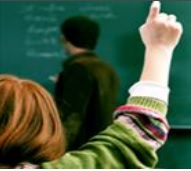Getting Ready for School-linked Services: “No Child Learns Alone” and “No Adult Works Alone”
By Hal A. Lawson, PhD
A Place Called School
Educators everywhere have heard and perhaps used a familiar slogan, “All children will come to school ready and able to learn”. It announces a mix of belief, hope, expectation, and aspiration. It implicates parental/family responsibilities for children’s health and well-being, attendance, and on-time arrival with homework completed and a lunch made at home or money for food at the school cafeteria.
Above all, this slogan signals and reinforces the inherited, dominant view of a place called school. This view prioritizes students’ academic learning and achievement facilitated by classroom teachers who mainly work alone. A limited number of student support professionals—counselors, school psychologists, and occasionally, social workers—are employed by the school district to provide assistance and supports for the few students who are not ready and able to learn.
Some student support professionals are also charged with making connections with parents and entire families, and so they facilitate home visits by principals and dedicated teachers. Occasionally, principals and student support professionals refer students to community-based or county-based health and social services, but this is an unusual event in the inherited model for the stand-alone, academically-oriented school.
After referrals, parents are expected to be in charge of follow-up appointments and their child’s adherence to prescribed interventions. Once treatment is completed, it is assumed to that these students, like their peers, will come to school ready and able to learn.
Inherited school reform models follow suit. Most proceed with site-based teams who prioritize academic planning for the school year; and with special emphasis on what happens inside the walls and how it is sequenced across the academic year. District office teams structure school-based teams’ reform initiatives and also learn and improve from them. State education departments’ standards, incentives, requirements, and resource allocations follow suit.
Changing Contexts for Teaching and Learning
Discrepancies from these several inheritances are manifest in schools and communities across New York, other states, and nations world-wide. Growing numbers of children are not coming to school on time with homework completed, and they bring social-emotional needs and health-related challenges. Apparently, parenting has become more difficult, particularly in school communities where steady jobs are declining, incomes are insufficient, both food and housing insecurities are “the new normal”, and worries are growing about safety, crime, and delinquency. Poverty, defined as an economic/monetary shortfall, is a primary cause, but it is exacerbated by perceived marginalization and discrimination (called “social exclusion”) and social isolation.
The increasing number of single parent families challenged in these ways, and others, is a complicating factor for the stand-alone school. Immigrant students and families whose first language is not English also pose challenges and repeatedly signal that the education workforce may need more cultural competence in service of differentiated instruction. Above all, needs are omnipresent for more counselors, school psychologists, social workers, nurses, and other helping professionals who are prepared, supported, and resourced to improve child and family health and well-being. Educators and student support professionals working in “walled-in schools” concerned almost exclusively with academic learning and achievement simply cannot do it all, alone. In fact, as more children do not come to school ready and able to learn, educators also may need health and social services supports.
In response to these several needs, and in anticipation of others, a growing number of school systems world-wide have looked outside the schools’ walls and beyond the school day for timely assistance, social supports, additional economic resources, and more comprehensive educational policies. Three models illustrate the possibilities and pave the way for others.
School-linked Services: Going Outside of the School Walls to Support Students and Educators
In some circles, the idea of “school-linked services” announces this bold, timely agenda. The main idea is to draw on community-based and county-operated services in support of child and family needs, while supporting educators. While student support professionals continue to offer services for particular students, others are referred to and treated by professionals sponsored in external agencies. Although payment systems vary, school systems provide clients and patients to community-sponsored and county-based organizations. A student support professional, typically a social worker, crosses boundaries and builds bridges.
The second model retains familiar language and a focus on the school’s primary mission for academic learning and achievement. It is called “A Comprehensive System of Learning Supports”. This nationally-relevant model has been developed by Howard Adelman and Linda Taylor who operate under the guise of the School Mental Health Project at UCLA. Their website provides treasure trove of policy briefs and practical materials.
The third model is increasingly called “the community school”, but with important variations. Popular in today’s New York City Schools, it is also an international model. Oftentimes, it invites and requires new school building architectures because it provides a new organizational home for educators and health, mental health, and social service providers formerly housed and working in community agencies. Aliases for this model include “community learning center” and “full-service school”. Alternative names signal differences among these models.
The above-named three models and their respective variations share at least four priorities:
(1) learning and healthy development during out-of-school time;
(2) parent involvement and family support;
(3) health, mental health, substance abuse, and social services; and
(4) assistance and supports for teachers.
In contrast to the stand-alone school, two slogans announce a collective effort:
- “No child learns alone”
- “No adult works alone”
All in all, this is a combustible mix that generates renewed energy, while simultaneously supporting children, families, educators, and service providers. Educational equity, manifested in cradle-to-career outcomes, is a prominent outcome, and this is why NYKids is invested in studying school systems and communities advancing this 21st Century agenda. To see how NYKids odds-beaters are tackling these priorities take a look at Port Chester, which provides an example of an “open door” community school model with health services available on site.



